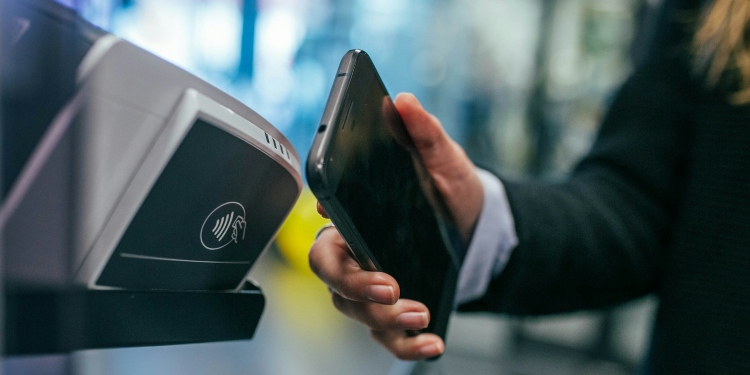The digital era has transformed how we consume content, from articles and videos to music and podcasts. However, monetizing this content has often been a challenge, especially for small-scale creators. Traditional payment systems, with high transaction fees and minimum thresholds, make it impractical to charge small amounts for individual pieces of content. This is where cryptocurrency steps in, revolutionizing the landscape by enabling micropayments—tiny transactions that unlock new possibilities for creators and consumers alike. Platforms like the-immediatefastx.com are at the forefront of this shift, offering innovative solutions that empower content monetization through seamless crypto transactions.
What Are Micropayments?
Micropayments are small financial transactions, often less than a dollar, designed to pay for low-cost goods or services. In the context of digital content, micropayments allow users to pay a fraction of a cent to read an article, watch a video, or listen to a song. Historically, high fees from banks and payment processors like PayPal or Visa made such small transactions uneconomical. Cryptocurrencies, with their low-cost, borderless, and instant transaction capabilities, are changing this dynamic.
The Role of Cryptocurrency in Micropayments
Cryptocurrencies like Bitcoin, Ethereum, and newer altcoins such as Solana or Stellar are built on blockchain technology, which allows for secure, transparent, and decentralized transactions. Unlike traditional payment systems, many cryptocurrencies have minimal fees, even for tiny amounts. For example, networks like Stellar or Solana can process transactions for fractions of a cent, making them ideal for micropayments.
Additionally, blockchain’s smart contracts—self-executing agreements coded to automate transactions—enable seamless micropayments. A smart contract can automatically charge a user a small amount when they access a piece of content, ensuring creators are paid instantly without intermediaries. This eliminates the need for subscription models or ad-heavy platforms, offering a cleaner, user-driven monetization method.
Benefits for Content Creators
For content creators, micropayments open up new revenue streams. Instead of relying on advertising, which often undervalues their work or alienates audiences, creators can charge small amounts per view or interaction. This model is particularly beneficial for independent journalists, bloggers, musicians, or educators who produce niche or specialized content. For instance, a journalist could charge $0.05 for a single article, making it affordable for readers while accumulating meaningful earnings over time.
Micropayments also empower creators in regions with limited access to traditional banking. Cryptocurrencies are borderless, allowing a writer in a developing nation to receive payments directly from global audiences without hefty conversion fees or delays.
Advantages for Consumers
From the consumer’s perspective, micropayments offer flexibility and fairness. Instead of committing to costly subscriptions for access to entire platforms, users can pay only for what they consume. This pay-per-use model ensures they’re not overpaying for content they don’t need. For example, a reader could spend $0.10 to access a premium article rather than $10 for a monthly subscription to a news site.
Moreover, cryptocurrencies enhance privacy. Unlike credit card payments, which require personal information, crypto transactions can be pseudonymous, protecting user data. This is a significant draw for privacy-conscious consumers wary of data breaches or tracking.
Real-World Applications
Several platforms are already leveraging crypto for micropayments. Brave Browser, for instance, uses its Basic Attention Token (BAT) to reward content creators and publishers. Users earn BAT by viewing ads and can tip creators or pay for premium content. Similarly, platforms like Coil allow creators to monetize websites, podcasts, or videos through micropayments as low as a few cents, powered by the Interledger Protocol and cryptocurrencies like XRP.
In the gaming world, blockchain-based micropayments enable players to purchase in-game items or access exclusive content without relying on centralized payment gateways. These examples highlight the versatility of crypto-driven micropayments across industries.
Challenges and Future Outlook
Despite their potential, crypto micropayments face hurdles. Price volatility in cryptocurrencies can complicate pricing for creators and consumers. Scalability is another concern—some blockchain networks struggle with high transaction volumes, leading to delays or increased costs. However, layer-2 solutions like Bitcoin’s Lightning Network or Ethereum’s rollups are addressing these issues by enabling faster, cheaper transactions.
Adoption remains a barrier, as many users are unfamiliar with cryptocurrencies or hesitant to use them. Education and user-friendly wallets are critical to mainstream acceptance. As blockchain technology matures and regulatory frameworks clarify, these challenges are likely to diminish.
Conclusion
Cryptocurrency is reshaping content monetization by making micropayments a viable reality. By reducing transaction costs, enhancing privacy, and enabling global access, crypto empowers creators to earn fair compensation and offers consumers a flexible, pay-as-you-go model. While challenges like volatility and adoption persist, the growing integration of blockchain in platforms like Brave and Coil signals a bright future. As more creators and consumers embrace this model, micropayments could redefine the economics of digital content, fostering a more equitable and sustainable ecosystem.
David Prior
David Prior is the editor of Today News, responsible for the overall editorial strategy. He is an NCTJ-qualified journalist with over 20 years’ experience, and is also editor of the award-winning hyperlocal news title Altrincham Today. His LinkedIn profile is here.













































































